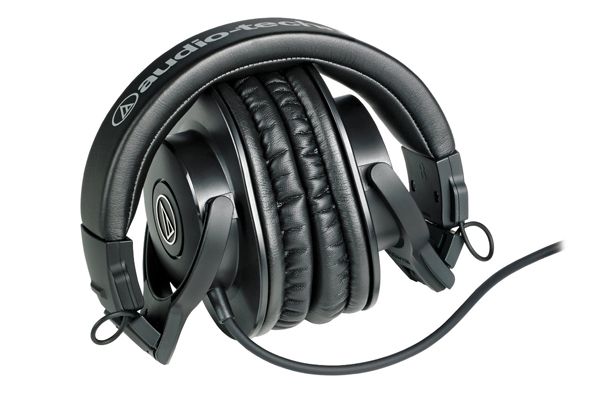Wireless headphones have become an indispensable accessory for many, offering convenience, freedom of movement, and high-quality audio without the hassle of cords. With a plethora of options available in the market, choosing the best pair of wireless headphones can be a daunting task.
Understanding Wireless Headphones
Before diving into the buying process, let's understand the basics of wireless headphones:
Types of Wireless Connectivity: Wireless headphones can use various connectivity options, including Bluetooth, RF (radio frequency), and infrared. Bluetooth is the most common and versatile, allowing seamless pairing with smartphones, tablets, laptops, and other Bluetooth-enabled devices.
Headphone Styles: Wireless headphones come in different styles such as over-ear, on-ear, and in-ear. Each style offers a unique fit, comfort level, and sound experience, so consider your preferences before choosing a style.
Battery Life: Since wireless headphones rely on internal batteries, consider the battery life offered by different models. Longer battery life ensures extended listening sessions without frequent recharging.
Sound Quality: Look for wireless headphones with high-quality audio drivers, and noise-canceling technology for an immersive and enjoyable listening experience.
Factors to Consider When Buying Wireless Headphones
Now, let's delve into the key factors you should consider when buying wireless headphones:
Sound Quality: The sound quality of wireless headphones is influenced by factors such as driver size, frequency response, and audio codecs. Opt for headphones with large drivers, balanced frequency response, and support for high-resolution audio formats for superior sound reproduction.
Noise-Canceling Technology: If you often listen in noisy environments or during travel, consider headphones with active noise-canceling (ANC) technology. Noise cancelling headphones can significantly reduce ambient noise, allowing you to focus on your music or calls.
Comfort and Fit: Choose headphones that are comfortable to wear for extended periods. Adjustable headbands, padded ear cushions, and lightweight designs contribute to overall comfort. In-ear headphones should come with multiple ear tip sizes for a secure and comfortable fit.
Battery Life and Charging: Check the battery life specifications of wireless headphones, especially if you use them for long hours. Look for fast-charging capabilities and compatibility with standard USB chargers for convenience.
Bluetooth Version: Ensure that the headphones support the latest Bluetooth version for optimal connectivity, improved battery efficiency, and enhanced audio quality. Bluetooth 5.0 and above offer better range and stability compared to older versions.
Controls and Features: Consider the ease of use and functionality of the headphone controls. Look for features such as touch controls, voice assistants (like Siri or Google Assistant), and customizable EQ settings for a personalized experience.
Brand Reputation and Reviews: Research reputable headphone brands known for their quality, durability, and customer support. Read user reviews and expert opinions to gain insights into the performance and reliability of specific models.
Types of Wireless Headphones
Wireless headphones come in various types, each offering unique features and benefits:
Over-Ear Headphones: These headphones have ear cups that fully enclose your ears, providing excellent sound isolation and comfort. They are ideal for immersive listening experiences and often come with ANC technology.
On-Ear Headphones: On-ear headphones rest on the outer part of your ears, offering a balance between comfort and portability. They are lightweight and suitable for everyday use.
In-Ear Headphones (Earbuds): In-ear headphones are compact and lightweight, fitting snugly into your ear canal. They are convenient for on-the-go use and often come with features like ANC, touch controls, and water resistance.
How to Choose the Best Wireless Headphones
Follow these steps to choose the best wireless headphones that suit your preferences and lifestyle:
Identify Your Needs: Determine your primary use case for wireless headphones, whether it's casual listening, workouts, gaming, or professional use. This will help narrow down your options based on specific features and functionalities.
Set a Budget: Establish a budget range based on your requirements and desired features. Wireless headphones are available across a wide price spectrum, from budget-friendly options to premium models with advanced technologies.
Research and Compare: Explore different brands, models, and customer reviews to compare features, sound quality, comfort, and durability. Pay attention to technical specifications such as driver size, frequency response, and Bluetooth compatibility.
Try Before You Buy: Whenever possible, test the headphones in person to assess comfort, fit, and sound quality. Pay attention to factors like noise isolation, bass response, and clarity across different genres of music.
Consider Additional Features: Depending on your preferences, consider additional features such as water resistance (IPX ratings), multi-device connectivity, customizable EQ settings, and compatibility with virtual assistants.
Check Warranty and Support: Look for headphones that come with a warranty period and reliable customer support. A good warranty ensures peace of mind and protection against defects or malfunctions.
Conclusion
Choosing the best pair of wireless headphones requires careful consideration of factors such as sound quality, comfort, features, and brand reputation. By understanding your needs, researching options, and testing headphones before purchase, you can find a wireless headphone that delivers an exceptional listening experience tailored to your preferences. Whether you prioritize noise-canceling capabilities, long battery life, or ergonomic design, there's a perfect pair of wireless headphones out there waiting to elevate your audio experience.





Comments